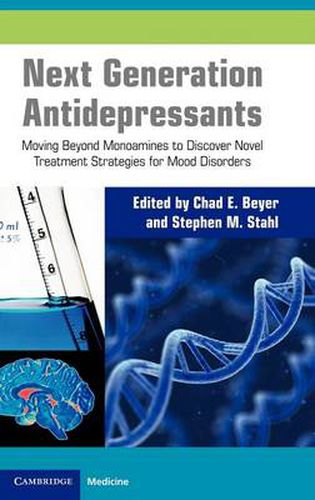Readings Newsletter
Become a Readings Member to make your shopping experience even easier.
Sign in or sign up for free!
You’re not far away from qualifying for FREE standard shipping within Australia
You’ve qualified for FREE standard shipping within Australia
The cart is loading…






The World Health Organization defines depression as a primary contributor to the global burden of disease and predicts it will become the second leading cause of death by 2020. The need to develop effective therapies has never been so pressing. Current antidepressant drugs have several limitations. This 2010 book looks at the future of mood-disorder research, covering the identification of new therapeutic targets, establishing new preclinical models, new medicinal chemistry opportunities, and fostering greater understanding of genetic influences. These strategies are likely to help build a better picture of the disease process, and lead to new opportunities for patient stratification and treatment. The ultimate goal for this strand of research is to develop more personalized and effective treatments for this chronic and debilitating condition. This is essential reading for all those involved in psychopharmacologic drug development, and mental health clinicians seeking a preview of discoveries soon to influence their practice.
$9.00 standard shipping within Australia
FREE standard shipping within Australia for orders over $100.00
Express & International shipping calculated at checkout
The World Health Organization defines depression as a primary contributor to the global burden of disease and predicts it will become the second leading cause of death by 2020. The need to develop effective therapies has never been so pressing. Current antidepressant drugs have several limitations. This 2010 book looks at the future of mood-disorder research, covering the identification of new therapeutic targets, establishing new preclinical models, new medicinal chemistry opportunities, and fostering greater understanding of genetic influences. These strategies are likely to help build a better picture of the disease process, and lead to new opportunities for patient stratification and treatment. The ultimate goal for this strand of research is to develop more personalized and effective treatments for this chronic and debilitating condition. This is essential reading for all those involved in psychopharmacologic drug development, and mental health clinicians seeking a preview of discoveries soon to influence their practice.